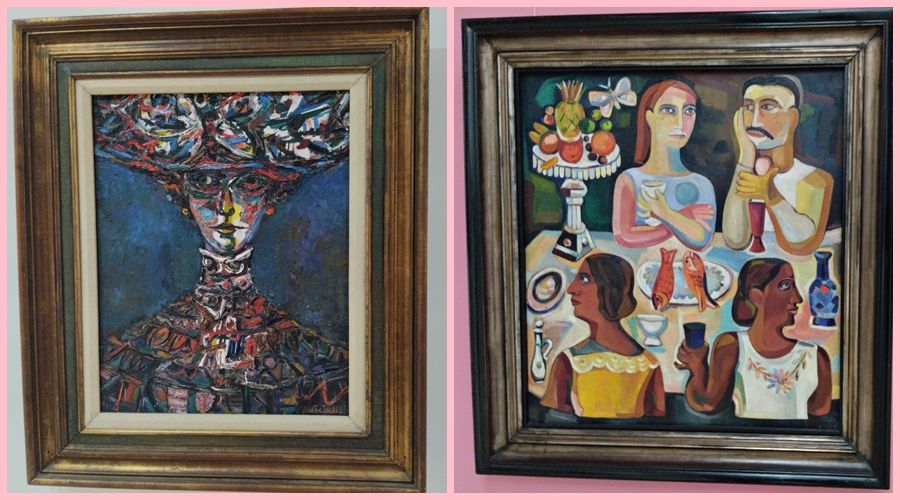English Version
Art in Cuba has always had a deep connection with national identity. Cubans love art in all its manifestations, and there have been (and are) many Cuban artists with great talent and recognition both inside and outside the country. That is why I felt very comfortable and excited on my first visit to the National Museum of Cuban Art, and to be able to appreciate closely the treasures it holds.
On more than one occasion I have visited the museum's headquarters dedicated to Universal Art, but I had never entered the building where the Cuban art exhibitions are located. This is a modern style building that combines the elegance of the contemporary with the functionality of the space. Here are treasured the most outstanding works of Cuban art, from its first manifestations, from the past to the most contemporary and current. This building has the privilege of being located in an area where there are other buildings with relevant histories and high architectural value. It is located on Trocadero Street, between Zulueta and Monserrate, in a very busy area, always full of national and foreign visitors.
The interior of the National Museum of Fine Arts is truly impressive. Upon entering the place, you are greeted by a spacious lobby, and from that moment on we can appreciate the art at every step. From there you can access a large inner courtyard from where we can see the immensity of the building, with each of the museum's levels housing different and diverse collections, allowing us to take a chronological tour through Cuban art.
In every corner of the museum, whether in its halls, corridors or in the lobby itself, we can appreciate samples of the best art, and in its rooms you can admire paintings by highly renowned painters such as Wifredo Lam, René Portocarrero, Mariano González and Servando Cabrera, among many others. Each work is not only a testament to the talent of its creators, but also a testament to Cuba's rich cultural history.
The Museum of Decorative Arts is not only a space to appreciate art and creativity but also an exquisite experience to enjoy a panoramic view of the artistic work of several generations of creators who have contributed, each from their own vision, to the development of national identity and culture.

Versión en Español
El arte en Cuba siempre ha tenido una profunda conexión con la identidad nacional. Los cubanos amamos el arte en todas sus manifestaciones, y han sido (y son) muchos los artistas cubanos con gran talento y reconocimiento tanto dentro como fuera del país. Es por eso que me sentí muy a gusto y emocionada en mi primera visita al Museo Nacional de Arte Cubano, y poder apreciar de cerca los tesoros que resguarda.
En más de una ocasión he visitado la sede del museo dedicada al Arte Universal, pero nunca había entrado en el edificio donde están las exposiciones de arte cubano. Este es un edificio de estilo moderno que combina la elegancia de lo contemporáneo con la funcionalidad del espacio. Aquí se atesoran las obras más sobresalientes del arte cubano, desde sus primeras manifestaciones, desde el pasado hasta lo más contemporáneo y actual. Esta edificación tiene el privilegio de estar enclavada en una zona donde existen otros edificios con historias relevantes y alto valor arquitectónico. Se encuentra localizada en la calle Trocadero, entre Zulueta y Monserrate, en una zona muy concurrida y siempre llena de visitantes tanto nacionales como extranjeros.
El interior del Museo Nacional de Bellas Artes es verdaderamente impresionante. Al ingresar al lugar nos recibe un amplio vestíbulo y desde ese momento se puede apreciar el arte a cada paso. Desde allí se accede a un amplio patio interior desde donde se puede percibir toda la inmensidad de la edificación, con cada uno de los niveles del museo en los que se albergan diferentes y diversas colecciones permitiendo un recorrido cronológico por el arte cubano.
En todos los rincones del museo, ya sea en sus salas, pasillos o el mismo vestíbulo, se pueden apreciar muestras del mejor arte. En sus salas se pude admirar cuadros de pintores altamente reconocidos como Wifredo Lam, René Portocarrero, Mariano González o Servando Cabrera, entre muchos otros. Cada obra no solo es un testimonio del talento de sus creadores sino la certeza de la rica historia cultural de Cuba.
El Museo de Artes Decorativas no solo es un espacio para apreciar el arte y la creatividad sino también una exquisita experiencia para disfrutar de una vista panorámica del quehacer artístico de varias generaciones de creadores que han aportado, cada cual, desde su visión, al desarrollo de la identidad y la cultura nacional.

![National Museum of Fine Arts, Cuban Art [EN/ES]](https://img.truvvle.com/?src=aHR0cHM6Ly9pbWcudHJhdmVsZmVlZC5pby9qb3JkeTA4MjclMkYyMDI1LTAyLTAyLTAzLTAyLTk0Ni1jb3Zlci1qcGc&width=3840)
















